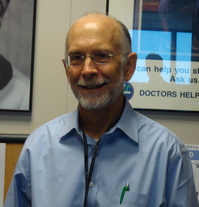 Thomas Kottke received his B.A. in anthropology in 1970 and his M.D. in 1974, both from the University of Minnesota. After completing a residency in internal medicine and a master’s in epidemiology, he returned to the University of Minnesota and completed a three-year fellowship in cardiology and preventive cardiology. He then joined the staff in cardiology in the Department of Medicine. While a medical student at the University of Minnesota, Kottke helped establish the Council for Interdisciplinary Health Programs (CHIP). In 1987, he moved to the Mayo Clinic.
Thomas Kottke received his B.A. in anthropology in 1970 and his M.D. in 1974, both from the University of Minnesota. After completing a residency in internal medicine and a master’s in epidemiology, he returned to the University of Minnesota and completed a three-year fellowship in cardiology and preventive cardiology. He then joined the staff in cardiology in the Department of Medicine. While a medical student at the University of Minnesota, Kottke helped establish the Council for Interdisciplinary Health Programs (CHIP). In 1987, he moved to the Mayo Clinic.
Interview Abstract
Thomas Kottke begins by discussing his background, including his education and why he became a physician. He discusses his time as a medical student at the University of Minnesota; going to McGill University for his residency; some of his experiences as a faculty member at the University of Minnesota Medical School, and getting the Preventive Cardiology Academic Award and his work on tobacco control and smoking. He described his impressions of the new Medical School curriculum as a student, his experience at a Sexual Attitude Reassessment Seminar, his experiences on the Council of Deans and Directors as a student representative, the perceived shortage of doctors in the 1960s, the relationship between the Medical School and the Mayo Clinic, and the reorganization of the health sciences in 1970. He discusses the Council for Health Interdisciplinary Participation (CHIP), family medicine, the recruitment of minority students, women students, and the affiliated hospitals. He discusses his father, Frederick Kottke, and his father’s connections with Democratic Congressional members, including Hubert Humphrey.
Biographical Sketch
Thomas Kottke was born in Minneapolis, Minnesota, on September 18, 1948. He attended the University of Minnesota for his undergraduate and medical degrees, receiving his BA in anthropology in 1970 and his MD in 1974. He did his residency in internal medicine for two years at McGill University’s Royal Victoria Hospital (1974-76) and then spent two years at University of North Carolina-Chapel Hill (1976-78). At UNC-Chapel Hill, he received his MSPH in Epidemiology and was a Robert Wood Johnson Clinical Scholar. In 1978, he returned to the University of Minnesota and completed a three-year fellowship in cardiology and preventive cardiology. He then joined the staff in cardiology in the Department of Medicine. While a medical student at the University of Minnesota, Kottke helped established the Council for Interdisciplinary Health Programs (CHIP). In 1987, he moved to the Mayo Clinic.
Interview Transcript
TKottke.pdf